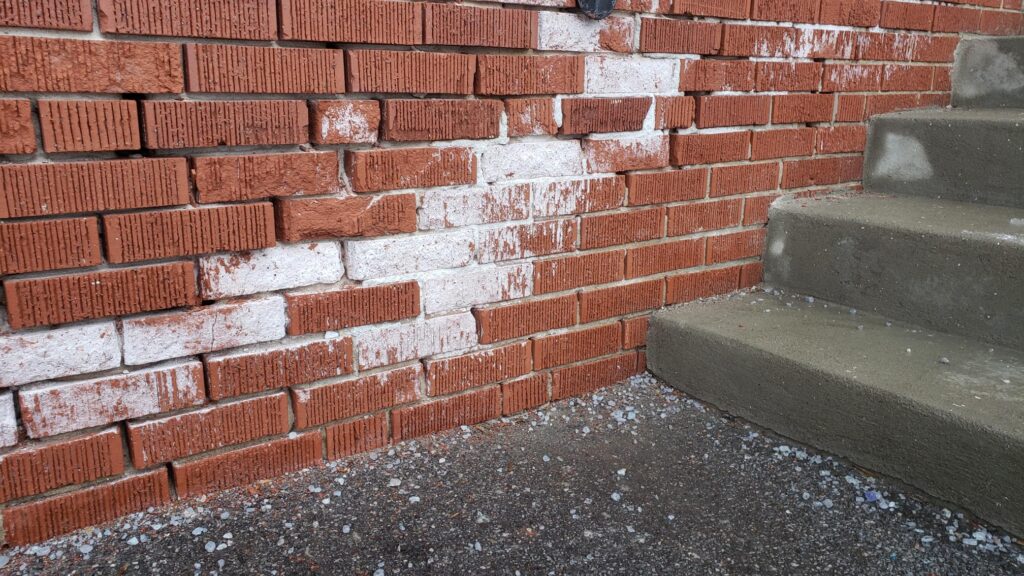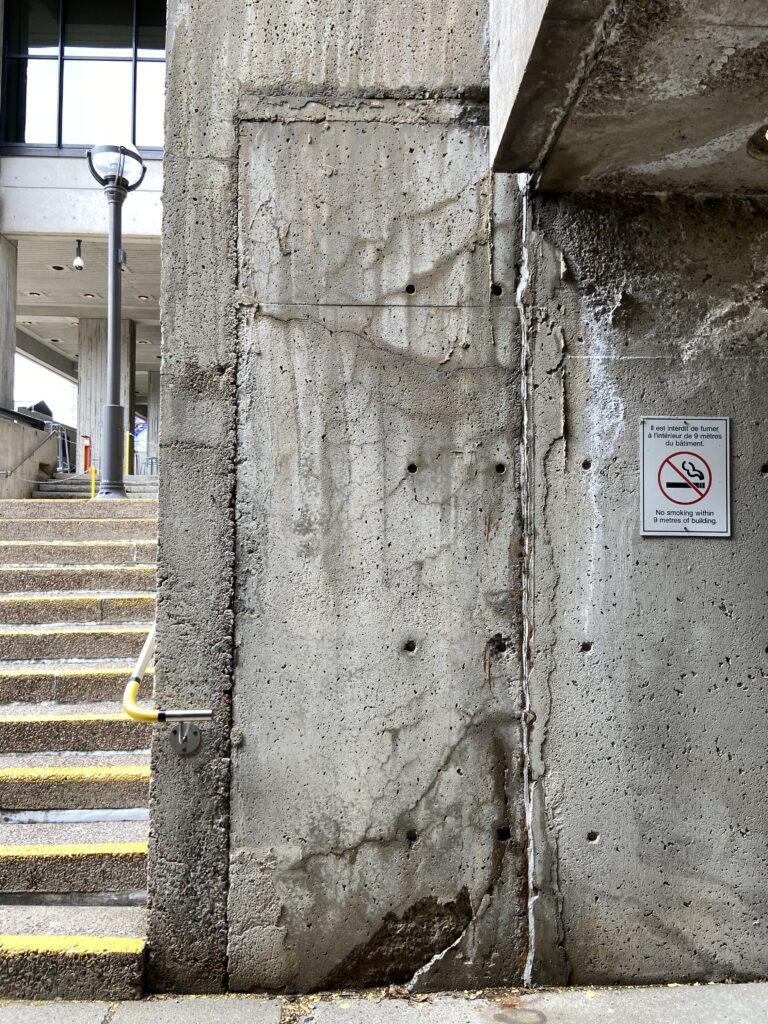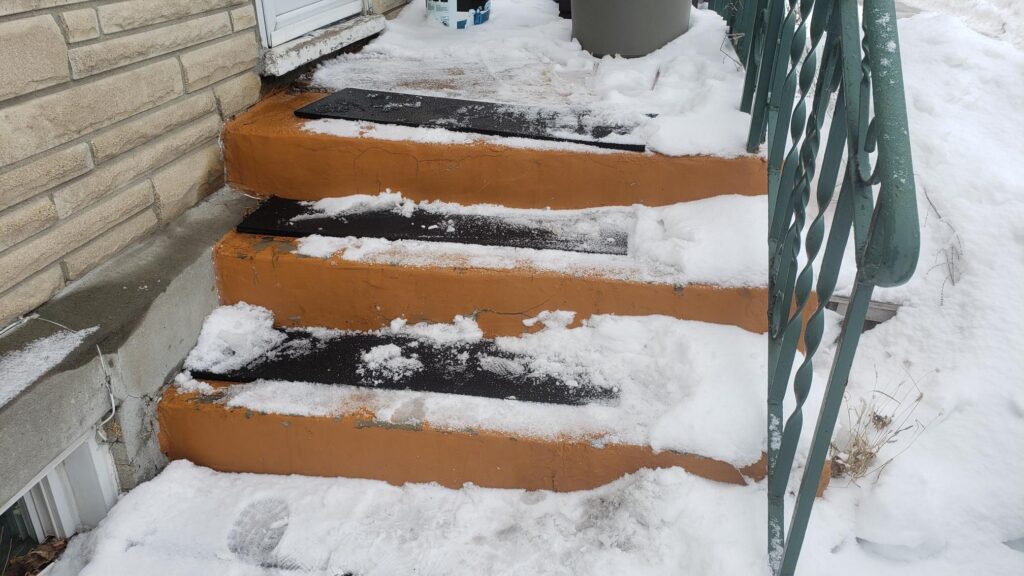With the return of winter weather comes the return of salt on every road, sidewalk, driveway, parking lot and walkway. According to this article (As icy conditions return, City of Ottawa needs to avoid using too much road salt, environmental advocates say – Capital Current) Ottawa uses approximately 185,000 metric tons of salt each year. And while this helps keep us safe, it comes at a hefty price to the built and natural environment, as well as our wallets.
Salt Seeps
Salt is readily absorbed by porous building materials such as concrete, stone and brick leading to efflorescence, subflorescence, cracks and spalls. Furthermore, it corrodes metal damaging vehicles as well as the steel reinforcement in concrete foundations. It also destroys our shoes and hurts the paws of our beloved dogs.
Repairing all of this is very costly, with every ton of salt costing the public, government and private institutions up to $800 to repair its damages, according the 2018 study by Chloride Conscious What is The REAL Cost of Salt Use for Deicing? – Chloride Conscious. Since some historic materials can be difficult to find suitable replacements for, prevention is certainly the best option. Due to the high embodied carbon of concrete, maintaining existing infrastructure in good condition significantly reduces greenhouse gas emissions (and related climate impacts) associated with new replacement materials.
Road salt is toxic to aquatic environments, so Ottawa Riverkeepers monitors several urban streams within the watershed and found some places are as salty as the ocean, harming wildlife and their habitats. You can read more about their findings here: Road Salt Monitoring – Ottawa Riverkeeper | Garde-rivière des Outaouais.


Stay Safe Without Harming our Environment
We have all heard stories (or have firsthand experience) of devastating falls on the ice and I think we generally agree that you can’t put a price on good health. So what are we to do? The answer is quite simple: use less salt.
Strategies which use less while maintaining a high degree of safety include:
- Shovel to remove as much snow as possible (this should always be the first step).
- Use mats/carpets to increase traction on stairs.
- Use only what you need – a coffee mug is all that is required for a 2-car driveway.
- Apply salt only where needed, keeping it away from building foundations as much as possible.
- Use sand or cat litter when it is too cold for salt to work (below -10 degrees Celsius).
- Use alternative formulas with less chloride such as potassium and/or magnesium based formulas. These are also safer for pet paws.
- Use common household alternatives: such as pickle brine, beet juice, coffee grinds or cat litter.
- If there is budget for it, forget about shoveling and salting altogether by installing heated driveways and walkways.
For those super slippery days after big ice storms, we can stay inside or add some metal spikes to our boots.

This is yet one more example of how conserving cultural heritage and the natural environment are one and the same thing and how something as simple as using less de-icing salt can save us money and reduce greenhouse gas emissions.
More information about the Ottawa Riverkeeper’s 2022-2023 Road Salt Program can be found here:

